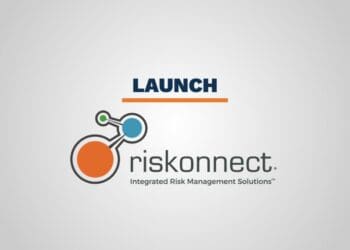with contributing author Thomas Larned
Most of us equate the term “conflict minerals” with blood diamonds mined in a war-ravaged country and used to finance armed conflict and human rights violations. Unfortunately, we often fail to recognize that most of us routinely use conflict minerals. Consider how these conflict minerals are a part of your daily life: tin (cassiterite) in toothpaste, tantalum (coltan) in zippers, tungsten (wolframite) in car seats and goldin televisions.
The Conflict Minerals Rules (the CMR) were established in order to disrupt the financing of wars in the Democratic Republic of the Congo (DRC) and adjoining countries. In 2010, Congress passed the Dodd-Frank Act, which directed the SEC to issue rules requiring certain companies to disclose their use of conflict minerals or any derivatives of these metals if those minerals are “necessary to the functionality or production of a product” manufactured by those companies. Under the Act, those minerals include tantalum, tin, gold and tungsten. These minerals are collectively referred to as 3T&G or 3TG. It is important to note that conflict minerals are always conflict minerals regardless of where they are sourced, or whether they financed or benefited an armed group.
Accordingly, manufacturers and retailers must perform due diligence to manage risks associated with violations of the CMR and avoid supply chain disruptions, as well as civil liability and enforcement action. In August 2012, the U.S. Securities and Exchange Commission (the SEC) adopted rules and regulations prohibiting the use of conflict minerals. In April 2014, a U.S. appeals court ruled that requiring companies to ascertain and report whether their supply chains were “conflict free” was an unconstitutional violation of freedom of speech. Nonetheless, publicly listed U.S. firms were still required to demonstrate that they had conducted an appropriate investigation.
Companies or entities are required to submit Conflict Minerals Reports to the SEC if: (a) they are required to file reports with the SEC under the Securities and Exchange Act of 1934 and (b) conflict minerals are necessary to the functionality or production of products that they manufacture or contract to be manufactured.
The Conflict Minerals Rules require any reporting company (or Issuer) “having conflict minerals that are necessary to the functionality or production of a product manufactured or contracted by that reporting company to be manufactured, shall file a report on Form SD within the period specified in the Form disclosing information required by applicable items of Form SD as specified in that Form.” See SEC Rule 13p-1.1 An Issuer is considered to be “contracting to manufacture” a product if it has some actual influence over the manufacturing of that product. The determination is based on facts and circumstances, taking into account the degree of influence a company exercises over the product’s manufacturing. A company is deemed not to have influence over the manufacturing if it merely affixes its label, repairs a product or negotiates contract terms for a third party.
Auditing and Reporting
The U.S. Conflict Minerals Law (CML) contains two requirements that are closely connected: independent third-party supply chain traceability audits and reporting of audit information to the public and SEC. However, even companies not directly regulated by the SEC will be impacted by the audit requirements because information/audit requirements will be pushed down through entire supply chains, including privately held and foreign-owned companies.
The Dodd-Frank Act requires that the independent private sector audit (IPSA) be performed. Performance of the IPSA requires that the standards set by the Government Accounting Office (the GAO) must be met in preparing the Conflict Minerals Report. Therefore, it is strongly recommended that CPAs be used in meeting the GAO standards and requirements. It is important to note that the IPSA cannot be performed in-house. An IPSA must be performed outside of the company/entity structure, whether such structure is legal or organizational.
Due Diligence
Currently, the Organisation for Economic Co-Operation and Development’s (OECD) Guidance satisfies the CMR due diligence requirement. In short, due diligence is a proactive and reactive process that requires companies and participants in the global marketplace to be engaged in assessing, identifying, preventing and/or mitigating and responding to actual violations and varying degrees of risks. This requires companies to be constantly evaluating business partners and relationships, including third-party suppliers and agents, industry and marketplace in relation to the CML.
In establishing a due diligence structure, the OECD CM Guidance strongly recommends that companies incorporate and integrate a five-step framework for risk-based due diligence (the Five-Step Framework) into their already existing due diligence protocols regarding their supply chain participants and sourcing decisions. The key aspects of the Five-Step Framework are as follows:
- Establish Strong Company Management Systems
- Identify And Assess Risk In The Supply Chain
- Design And Implement A Strategy To Respond To Identified Risks
- Carry Out Independent Third-Party Audit of Supply Chain Due Diligence At An Identified Point In the Supply Chain
- Report on Supply Chain Due Diligence
In performing due diligence, it is not just the requirement of companies upstream with the supply chain that matters, but also companies downstream and throughout the supply chain. Participants within the supply chain where conflict minerals are involved should be engaging in due diligence on a systematic and consistent basis. All participants within the supply chain should be performing some form of due diligence to ensure compliance with the CML, as well as establishing possible mitigation for potential liability.
Best Practices for Compliance
Companies seeking to achieve compliance should understand the impacts on channel suppliers. The next two large obstacles are economic (determining how to incorporate CMR compliance within a budget and simply continuing to respond to or project the answers to the legal unknowns, because the Conflict Minerals Rules are still in flux.2 Once it is clear that the CMR are applicable to your company, then it is incumbent upon the Issuer to become proactive regarding the implementation or integration of robust policies, procedures, training and sustainability of CML compliance. This includes implementing the Five-Step Framework and ensuring that auditing and reporting protocols are in place.
The next steps involve becoming more focused on conflict minerals and how the law influences an Issuer’s industry, marketplace and productivity. As much as revenue and profit are a fundamental factor in determining success, compliance must also be a bottom-line indicator. For those Issuers, whether based domestically or internationally, upstream or downstream in the supply chain or fluctuating within the middle, a culture of compliance and top-down commitment is critical. Without strong senior-level management buy-in, compliance will fail and the potential for enforcement against the company increases exponentially. Communicate the policy not only through the company, but also throughout the supply chain. Integrate contractual obligations and/or limitations within contracts and agreements with suppliers and third-party participants within the supply chain. Ensure that your current auditing and reporting requirements take into account the requirements of compliance with the CML. As our global economy expands and technology continues to advance, conflict minerals will remain a part of our daily lives and it is imperative that we all increase our awareness, develop or revise our policies and remain active and proactive regarding compliance.
1 This requirement is stayed per SEC Order. See Footnote 2. The first reporting deadline was May 31, 2014.
2 On April 14, 2014, in the matter of National Association of Manufacturers, et al. v. SEC, the U.S. Court of Appeals for the District of Columbia Circuit (the D.C. Circuit) held that while the Plaintiff’s challenge to the CMR was not proper as based on the Administrative Procedure Act (the APA) and the Exchange Act, Section 13(p) and Rule 13p-1, it did violate the First Amendment (See National Association of Manufacturers, et al. v. SEC, et al., No. 13-5252 (D.C. Cir. April 14, 2014). The Court held that Section 13(p) and Rule 13p-1 “violate the First Amendment to the extent the statute and rule require regulated entities to report to the Commission and to state on their website that any of their product have ‘not been found to be “DRC conflict free.”'” See Id. at 23. There was no “First Amendment objection to any other aspect of the conflict minerals report or required disclosures.” See Id. at 17 n.8. Because of the D.C. Circuit’s decision, the SEC issued an Order partially staying the CMR because the “effective date for compliance with those portions of Rule 13p-1 and Form SD that would require the statements by issuers that the Court of Appeals held would violate the First Amendment.” See Order Issuing Stay, May 2, 2014 (In the Matter of Exchange Act Rule 13p-1 and Form SD, Securities Exchange Act of 1934, Release No. 72079/May 2, 2014, File No. S7-40-10); see also 5 U.S.C. 705.













